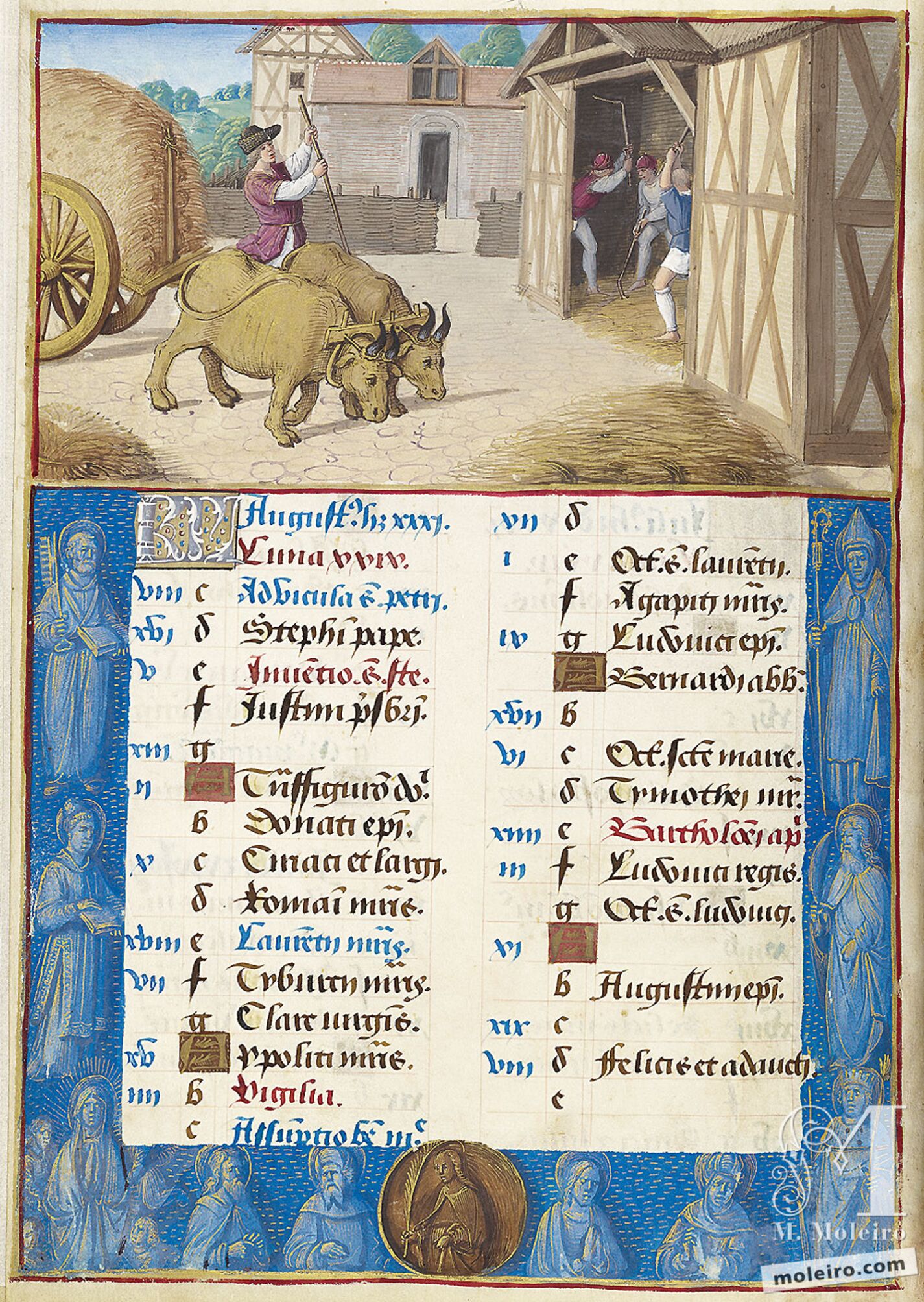The left margin begins with St. Peter, holding a book and a large key (for the Feast of St. Peter in Chains, August 1, in blue). He is followed by St. Stephen, holding a book and with a rock on his head (for the feast of the discovery of his relics, August 3, in red), and the Assumption of the Virgin (August 15, in blue). She is shown with her hands together in prayer and surrounded by the angels who raise her to heaven. The two male saints without attributes probably represent in a general way the martyrs listed in the first half of the month: Cyriac and Largus (August 8), Romanus (August 9), Tiburtius (August 11), or Hippolytus (August 13). At the right, the first figure, wearing a cope and miter and holding a crosier, could be St. Louis of Toulouse (August 19, in black, but with an octave on August 26) or St. Bernard of Clairvaux (August 20). This figures is followed by St. Bartholomew the Apostle, holding his butcher’s knife with which he was flayed (August 24, in red), and King Louis IX of France (August 25). The turbaned woman without an attribute is a puzzle since the only female saint in August besides the Virgin Mary is Clare (August 12), who would never wear such headgear. The last woman is the Virgin; she is repeated here because her Feast of the Assumption is commemorated with an octave (August 22).
The zodiacal sign is Virgo, the Virgin (holding a palm branch).
The left margin begins with St. Peter, holding a book and a large key (for the Feast of St. Peter in Chains, August 1, in blue). He is followed by St. Stephen, holding a book and with a rock on his head (for the feast of the discovery of his relics, August 3, in red), and the Assumption of the Virgin (August 15, in blue). She is shown with her hands together in prayer and surrounded by the angels who raise her to heaven. The two male saints without attributes probably represent in a general way the martyrs listed in the first half of the month: Cyriac and Largus (August 8), Romanus (August 9), Tiburtius (August 11), or Hippolytus (August 13). At the right, the first figure, wearing a cope and miter and holding a crosier, could be St. Louis of Toulouse (August 19, in black, but with an octave on August 26) or St. Bernard of Clairvaux (August 20). This figures is followed by St. Bartholomew the Apostle, holding his butcher’s knife with which he was flayed (August 24, in red), and King Louis IX of France (August 25). The turbaned woman without an attribute is a puzzle since the only female saint in August besides the Virgin Mary is Clare (August 12), who would never wear such headgear. The last woman is the Virgin; she is repeated here because her Feast of the Assumption is commemorated with an octave (August 22).
The zodiacal sign is Virgo, the Virgin (holding a palm branch).